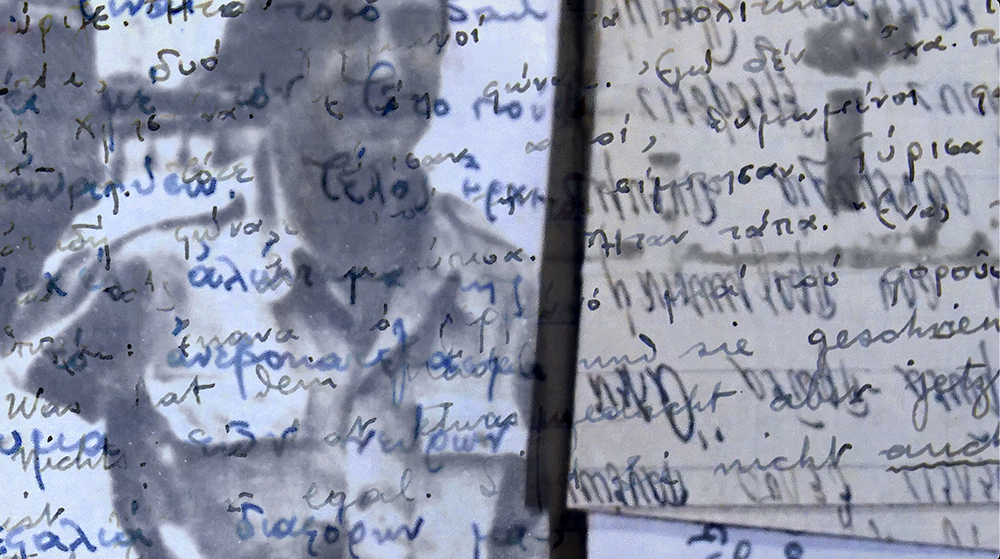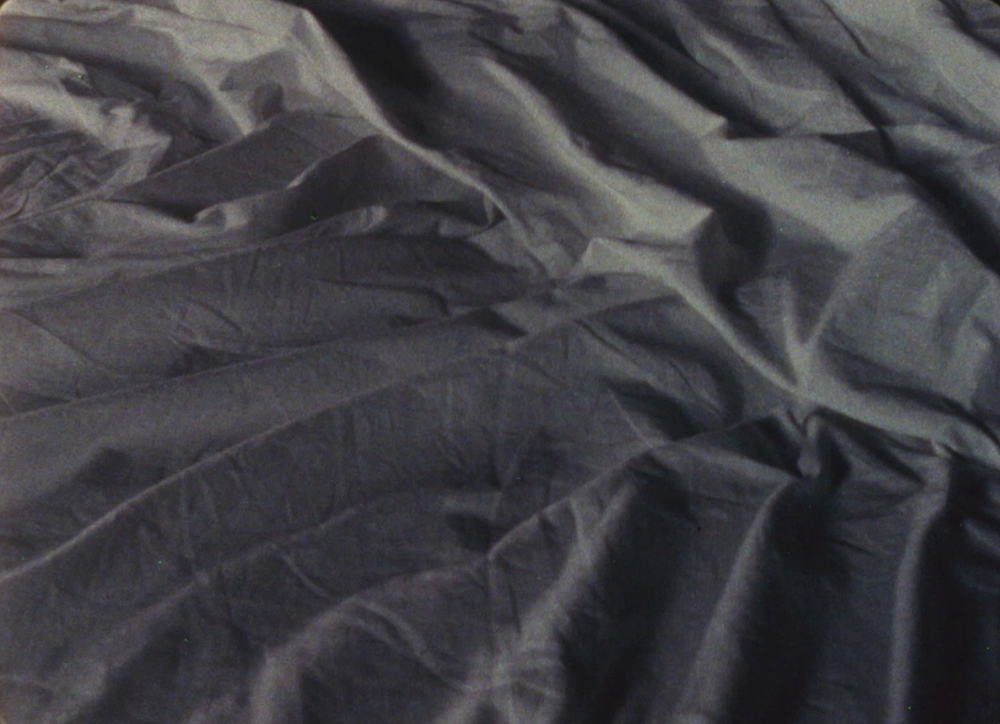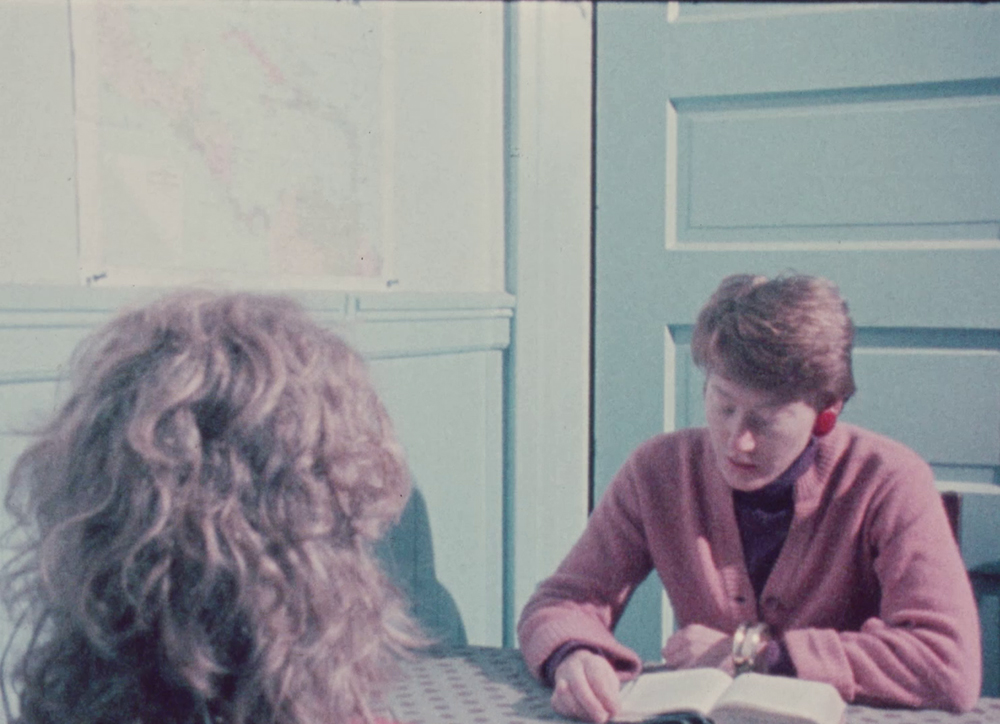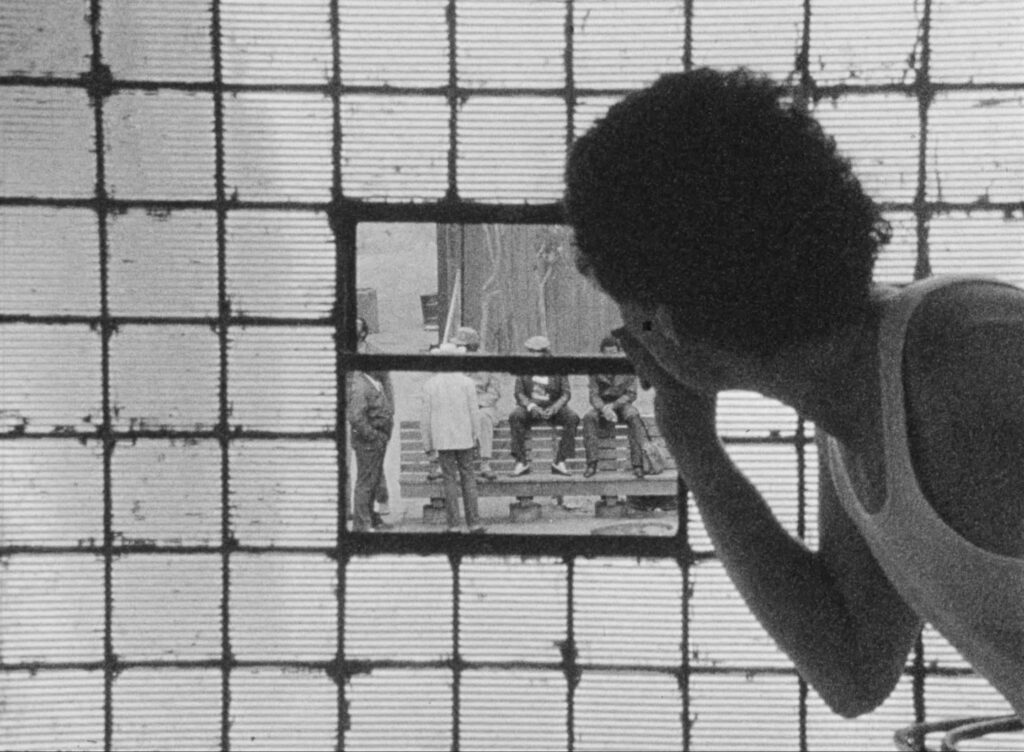Now Available: Jeffrey Skoller’s The Unimagined Lives of Our Neighbors: Occupation Diary + Four New Digitizations
Posted April 9th, 2025 in Announcements, New Acquisitions, New Digital Files, News / Events
Canyon Cinema is pleased to announce the acquisition of five new exhibition files from longtime artist member Jeffrey Skoller. This deposit includes the latest installment of Skoller’s Unimagined Lives series, Occupation Diary (2025), as well as new 2K digitizations of four 16mm films from the 1980s and 1990s, including Moving In (1982), Topography/Surface Writing (1984), Nicaragua: Hear-Say/See-Here (1986), and The Malady of Death (1994).
The Unimagined Lives of Our Neighbors, is a series of film portraits of nonagenarians recounting their own experiences in history changing events that shaped the world and the rest of their own lives. As Skoller writes, “Our communities are filled with the elderly who live quietly among us. People in their 90’s have little to hide and often are eager to honestly examine events from the distant past. Cloaked in an aura of frailty, we have little idea of the people they once were. Neither agents nor victims, these portraits are an attempt to give voice and memory to those who are still part of our communities and whose experiences in history altering events help enlarge and give personal dimension to our understanding of such past events.”
Occupation Diary screens at San Francisco’s Other Cinema on Saturday, May 3rd, alongside Skoller’s 2019 Unimagined Lives iteration, a riveting tale of scouting the atomic ruins of Japan mere days after the explosions, told by Skoller’s neighbor Joseph Fischer, and Želimir Žilnik’s Uprising in Jazak (1973).
Jeffrey Skoller is a writer and filmmaker. In both scholarship and image-making, Skoller explores the radical aesthetics and praxis of the political avant-garde, representations of history and time, and contemporary cinematic hybrids such as the essay film, experimental documentary, animated documentary and expanded cinemas. Skoller’s films have been exhibited internationally. He is the author of Shadows, Specters, Shards: Making History in Avant-Garde Film (University of Minnesota Press) and POSTWAR: The Films of Daniel Eisenberg (Blackdog Press). Skoller is Professor Emeritus in the Film & Media Dept. at UC Berkeley.

The Unimagined Lives of Our Neighbors: Occupation Diary (2025, 40 minutes, color, sound, digital file)
What are the experiences that shape the long lives of those we live among?
The Unimagined Lives of Our Neighbors: Occupation Diary is the second part of a series of film portraits of nonagenarians recounting their own experiences in history changing events that shaped the world and the rest of their own lives. Neither agents nor victims, these portraits are an attempt to give voice and memory to those elderly people who live quietly among us yet often unseen, are still part of our communities and whose experiences in history altering events help enlarge and give personal dimension to our understanding of such past events.
In Occupation Diary, Alex Matthews at 93, recounts his role in the largely unknown Guerilla resistance in the struggle against the horrors of Nazi Occupation of Greece that led up to the first Greek Civil war–the first cold war conflict of the post-war period and the first use of the American “containment policies.” Using excerpts and images from his war dairies, family photographs, and other archival materials intercut with the sites of struggle in the present, Matthews recounts to his daughter what he witnessed 75 years earlier. In this intimate portrait, he is sstill trying to comprehend the devastation, violence he encountered, as a young man, as well as defending the ethics of some of his actions that lead up to leaving his beloved Greece forever.

The Malady of Death (1994, 43 minutes, color, sound, 16mm or digital file)
“The Malady of Death is an adaptation of Marguerite Duras’s story of the same name – her text comprises the voice-over – which is a particular reading of the story in which word and image, in a complex interplay, explore male sexuality. The processes of reading are revealed to be complicated, poetic and political, as an unspecified narrator names and describes ‘the malady’ and tells of a man and woman’s sexual encounters. The male ‘you’ is multiplied, depicted by many men, each photographed nude, variously fragmented and abstracted, studied and distanced. The ‘she’ the ‘difference,’ is literally absent from the image but present metaphorically, ‘possessed’ but not known. While societal connections between possessing sexuality, economically, and by force are explored in relation to male sexuality, the implication of the act of looking permeate all these discourses. The erotic depiction of the male body for both the camera and the viewer, the displaced and disembodied representation of the woman, and the structured alternation of image and black – at times like an eye opening and closing, but also suggestive of what culturally can and cannot be imagined – create a viewer who cannot easily possess the story, but who must rather read and reread.” – Kathy Geritz, Pacific Film Archive

Nicaragua: Hear-Say/See-Here (1986, 64 minutes, color, sound, 16mm or digital file)
This film is a modest attempt to better understand a situation that my own country’s government and media have mystified and depersonalized by reducing the representations of Nicaragua to a war zone rather than a place where people live their lives. Using the process of making the film as a starting point for my own engagement with my subject, a world so different from my own, I begin with a question: As a North American, what is my relationship to Nicaragua?

Topography/Surface Writing (1984, 37 minutes, color, sound, 16mm or digital file)
As in everyday life, Topography/Surface Writing is a series of events, impressions, voices, ideas, sounds, images, texts and textures. In their constant flow they become a surface upon which we always move. Like Kafka’s “In the Penal Colony,” from which it is loosely adapted, the main theme is violence: physical, psychological, and environmental. However, the film does not give a portrait of violence in the conventional sense of representing it as spectacle or drama and therefore separate from the everyday, nor does it attempt to analyze or aestheticize the problem. Rather, the film attempts to show how integrated violence is in the very fabric of our lives. As the title suggests, Topography/Surface Writing is not an essay, but rather a mapping of new possibilities for seeing and thinking through the use of cinema that is neither authoritarian nor passive, but rather a challenge.

Moving In (1982, 18 minutes, b&w, sound, 16mm or digital file)
Moving In begins as a documentary on the growing problem of homelessness in San Francisco in the wake of Reagan-era budget cuts and ends as a meditation on the filmmaker’s own relationship to the situation. Having moved into a “bad” area as a middle-class artist searching for affordable living and working space, the filmmaker is confronted with his own luxury of choice about where he places himself in the world while surrounded by people who have no real choice.
The film uses the filmmaker’s “liberal guilt” about his own privilege to raise questions about whether or not it is possible to represent a world that the filmmaker has had little connection to without further exploiting, sentimentalizing or reinforcing the dehumanization of people who are victims of a political system that privileges greed over equality. Moving In is at once a film about homelessness and a question about how that situation is represented.


